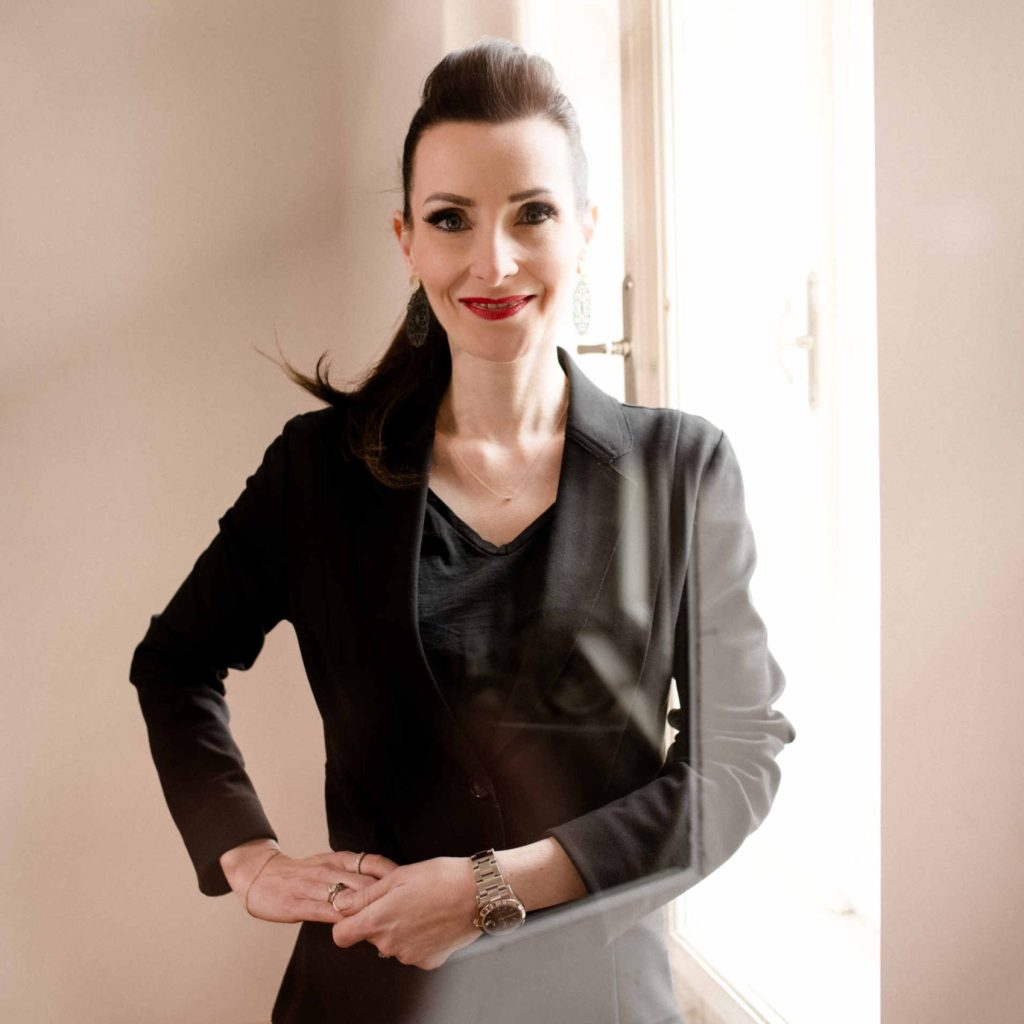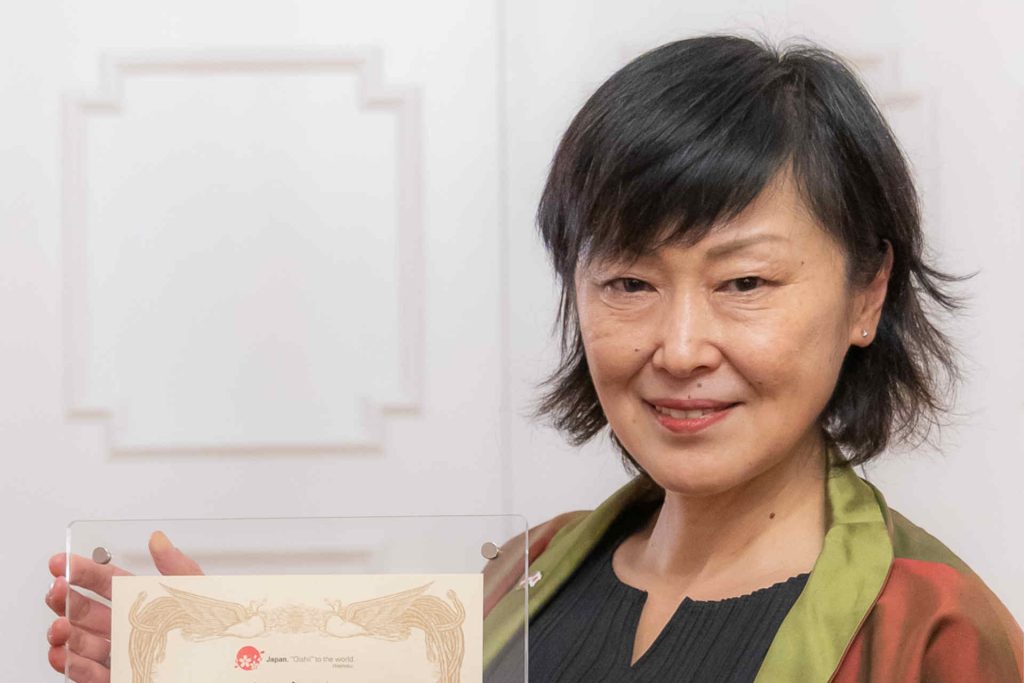

“In these increasingly hectic times, we try as best we can to convey the experience and enjoyment of tea to our guests with all their senses.”
Ayumi Kondo
Matcha is more than a trend – it’s a way of life. While matcha lattes are on everyone’s lips worldwide, Vienna was actually ahead of its time, according to Ayumi Kondo. For almost two decades, she has been teaching the finer points of genuine Japanese tea culture in her tea house Cha no Madie – beyond superfood clichés and green insta-drinks. In this interview, she explains why matcha should be more than just a decoration on desserts, what good matcha really needs to be able to do and how cherry blossoms and umami could enrich Austria’s menus.
ALEXANDRA GORSCHE: Matcha is a global trend - how do you perceive the development in Austria?
AYUMI KONDO: My tea store, Cha no Ma, opened in May 2006. Back then, hardly anyone knew about matcha. People ran away when we tried to offer them free samples. Awareness has increased since around 2010, partly because the number of people following a vegan diet has increased and matcha has been praised as a superfood for vegans. Among other things, it contains a lot of iron - often a deficiency in a vegan diet. At the beginning of the 2010s, we noticed that matcha was more of a trend in Vienna than in Berlin, London or Paris, for example.
Where do you see the greatest potential for matcha in local gastronomy?
Mainly as an addition to desserts.
Many people associate matcha with healthy indulgence. Is that also your approach or is it primarily about tradition for you?
My personal experience has always been healthy enjoyment first and tradition second. My uncle was a biologist in Japan and he taught me as a child how good matcha tastes and how incredibly healthy it is. He practiced Sadō, the Japanese tea ceremony, but it was often too time-consuming for him. In order to be able to enjoy the delicious and healthy tea in a short time, he always prepared matcha almost like instant coffee and often invited me to drink tea with him. As a small child, however, I looked forward more to the sweets he served while drinking tea.
You have created an exciting fusion with the vegan matcha doughnut. How did this idea come about?
Matcha is the slightly bitter contrast to the sweetness of the pastries. The bright green color is also incredibly exciting. I think green and sweet have only ever existed as pistachio ice cream. But the green of matcha is more profound.
Are there any particular challenges when integrating traditional Japanese ingredients into Austrian recipes?
Yes and no. The understanding of the umami notes of Japanese spices and sauces could very well be used more in local cuisine. However, this understanding already exists in higher-class restaurants in Austria. Japanese ingredients are booming, especially in France and Great Britain, where the spices and some ingredients are used as natural “flavor enhancers”, such as soy sauces, miso, kombu seaweed, shiitake mushrooms, sake (rice wine) and mirin (sweet cooking rice wine).
With soy sauces and miso in particular, there are endless variations that can be used in different ways. Incidentally, sake, mirin and other Japanese alcoholic beverages that are fermented with the help of Kōji noble mold were added to UNESCO's list of intangible cultural heritage just last year. Kōji, which is also used to make soy sauce and miso, is the ultimate umami booster.
In Japan, tea is more than just a drink - it's a way of life. How do you bring this understanding closer to people here?
Sadly, tea has lost a lot of its value in Japan over the last two decades. The “life concept of tea” has become an absolute matter of course that is hardly noticed anymore. Sencha green tea is now usually only bought in PET bottles in supermarkets and vending machines as a ready-to-drink beverage made from third-class tea leaves. Many Japanese households also no longer have kyūsu teapots (single-handled teapots), in which sencha leaf teas are traditionally prepared. Matcha is known in Japan more as an addition to matcha latte, ice cream and chocolate. I now feel that Western countries have a much better understanding of the quality and value of Japanese sencha leaf tea and matcha.
What misconceptions still exist in Austria about matcha or Japanese tea in general?
Green tea is still perceived as a bitter drink. Quality is crucial here. The higher the quality, the milder and smoother the taste. Umami notes also come to the fore in these teas. There is also a big difference between green tea from Japan and China. In Japan, the tea leaves are heated with hot steam immediately after harvesting to eliminate the enzymes in the leaves that are responsible for the oxidation of the leaves. The deep green color and fresh grassy notes are thus preserved. In China, on the other hand, the leaves are heated by roasting, which gives these green teas a slightly roasted aroma and the color in the cup is more yellowish. If the leaves are left untreated after harvesting, the leaves wither and a black tea is ultimately produced. Whether in powder or leaf form, tea oxidizes more quickly than green tea. It should therefore always be protected from heat, light and odors. It absorbs odors like a sponge.
Your tea house is also about the sensual experience of tea. What makes an authentic matcha preparation?
In these increasingly hectic times, we try as best we can to convey the experience and enjoyment of tea with all the senses to our guests. When I prepare a classic matcha for the guest, i.e. the whisking of matcha and water, it's a little moment of calm, especially when the fresh, grassy aromas of the tea hit the nose.
Matcha is becoming increasingly popular, but not all matcha is of high quality. How can you recognize really good matcha?
By the color and the taste. The purer and clearer the green, without a yellow tinge, and the less bitter the taste, combined with a slight umami sweetness, the better the quality. However, it also costs correspondingly more. Cheap matcha is not a cheaply produced product. They are simply cheap products that usually do not come from Japan. But even there, there is cheap matcha that is from the third or fourth plucking and contains hardly any of the important nutrients and tastes bitter.
In times of sustainability and conscious nutrition, what role do origin and quality play for you?
High-quality tea in particular is grown very sustainably in Japan. This means that no chemical fertilizers are used, only traditional, natural fertilizers, which have often been handed down over generations. Only in this way can the soil remain healthy and pass on the important plant substances to the tea leaves.
Are there any Japanese producers or farmers that you particularly like to work with?
Yes, we stock all these products at Cha no Ma. And we are always getting to know great new producers, which we then try to include in our range.
How do you see the future of matcha in Austrian gastronomy? Will it remain a niche product or will it become more widely accepted?
I hope that matcha will become more widely accepted in the local gastronomy sector. In fact, matcha is no longer a niche product here in Vienna - even large bakery chains have matcha lattes on their menus. The challenge is rather to make high-quality, authentic matcha from Japan better known. Global demand has increased enormously, so we are experiencing new dimensions in our company. We now have to enter into binding annual contracts in order to secure our desired quantity of matcha from Japan. It is becoming a rarity, but thanks to our long-standing relationships with producers and tea farmers, we are currently still receiving our desired quantities.
Are there any new products or creations with matcha that you are currently working on?
Yes, from the beginning of April we want to offer creations with matcha and sakura cherry blossom. Both as a drink and as a dessert, e.g. Sakura Daifuku Mochi. I also hope to be able to offer customers tea from Shiga Prefecture soon. Ōmi-Cha (Ōmi is the old name of the prefecture) was one of the first green teas to be cultivated in Japan. The mountainous landscape, where a lot of snow falls in winter, gives the tea an unmistakably strong flavor that I have never experienced before.
What advice would you give to a restaurateur who wants to include matcha in their program?
Definitely buy good quality, even if it is more expensive. It pays off.
The purer and clearer the green, without a yellow tinge, and also the less bitter the taste, combined with a slight umami sweetness, the better the quality of matcha.
The purer and clearer the green, without a yellow tinge, and also the less bitter the taste, combined with a slight umami sweetness, the better the quality of matcha.



Matcha is more than a trend – it’s a way of life. While matcha lattes are on everyone’s lips worldwide, Vienna was actually ahead of its time, according to Ayumi Kondo. For almost two decades, she has been teaching the finer points of genuine Japanese tea culture in her tea house Cha no Madie – beyond superfood clichés and green insta-drinks. In this interview, she explains why matcha should be more than just a decoration on desserts, what good matcha really needs to be able to do and how cherry blossoms and umami could enrich Austria’s menus.